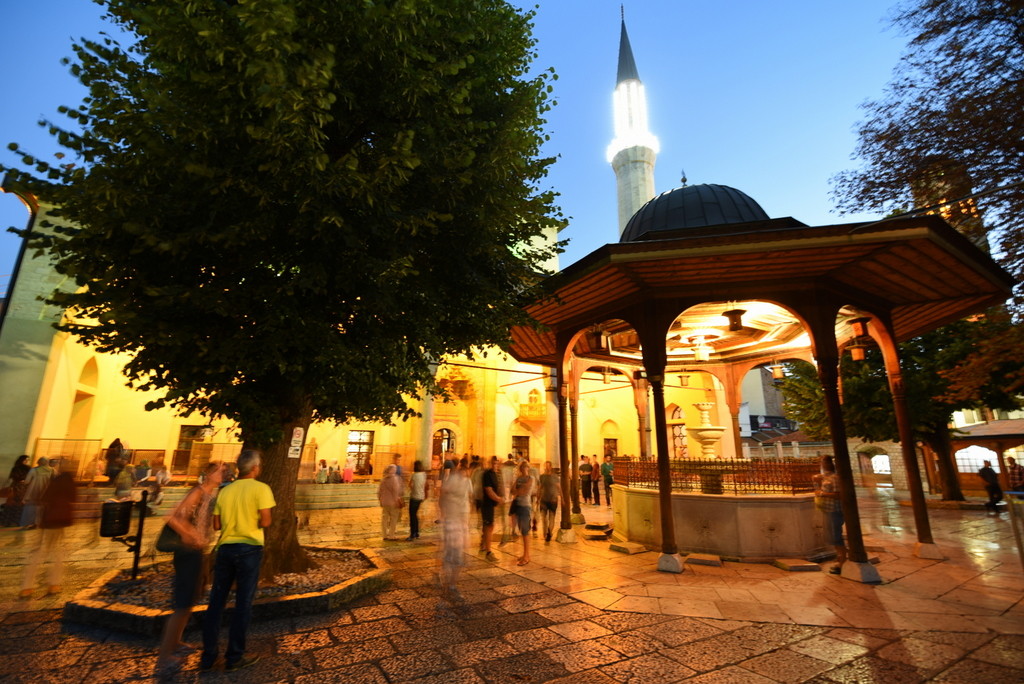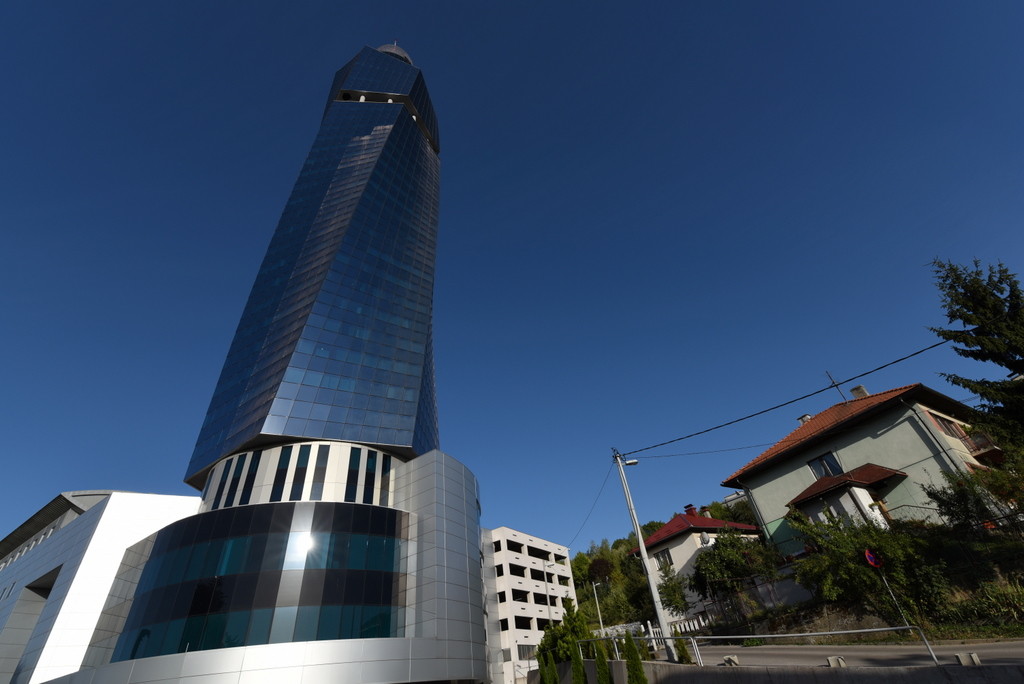Bosnian coffee (bosanska kafa) is not just a drink. It’s a complex social ritual that captures this culture’s deliberate, stop-and-smell-the-tulips approach to life. Unfiltered, potent Bosnian coffee (which you probably think of as “Turkish coffee”) comes with a very specific procedure.
In Mostar, my friend Alma (who’s a local guide for our Rick Steves Best of the Adriatic tours) takes me for Bosnian coffee…at her son’s brand-new coffee shop. Jaz (pronounced “yahz”) proudly shows me around his inviting, tastefully decorated space.
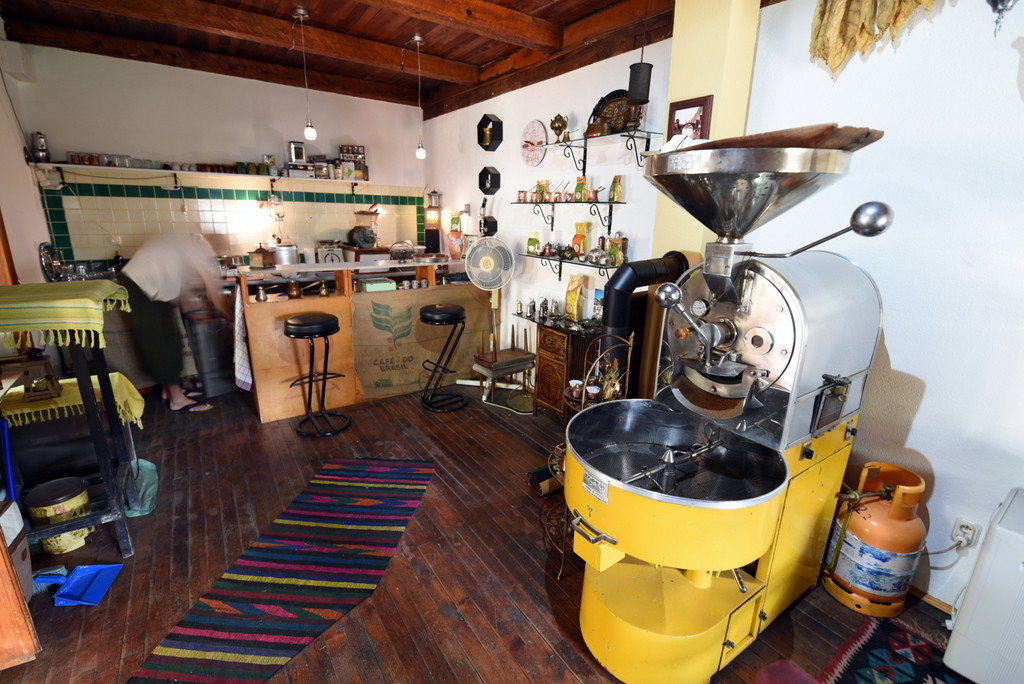
The centerpiece is a yellow behemoth of a coffee roaster. Alma explains that she and her husband, Ermin, bought this machine in 1991. They were fed up with the rat race and planned to open their own café to share their passion for coffee with their neighbors. They took delivery on the coffee roaster just days before fighting broke out. It arrived on what turned out to be the last delivery train that ran through a united Socialist Federal Republic of Yugoslavia. And just a few months later, war ripped through Mostar. Alma and Ermin — now focused on survival rather than coffee — tucked the roaster away in their basement and forgot about it.
Just a few months ago, their son Jaz graduated from university with a degree in public relations. But in the anemic Bosnian economy, jobs in his field are rare. So, like his parents before him, he decided to open his own coffee house. Jaz dusted off and tuned up the old coffee roaster, which still works fine despite its shrapnel scars. Jaz perfected his own formula for roasting beans, and even designed his own label for the coffee bags. And, in a move that will warm the heart of any mother, he decided to call the place Café de Alma.
Jaz and Alma are dedicated to not just serving Bosnian coffee, but teaching the Bosnian worldview. And in a way, the two are one and the same.

Jaz pours his beans into a grinder and runs them through to the ideal coarseness. He shows me a couple of older-style grinders: A small wooden box with a handle on top, and the classic Bosnian grinder: a copper cylinder that contains a detachable handle. He shows me how you hold the grinder against your belly or your hip while you turn the handle.
Next, Jaz brings water to a boil on the stove and measures the coffee grounds into the džezva, a small copper-plated kettle with a long, straight handle. When the water comes to a boil, he pours it into the container. An air bubble pushes a plug of coffee grounds to the brim. He puts the copper kettle onto the fire to get it boiling, then spoons a few fat drops of water onto the top to gently tamp down the grounds. As he methodically folds the grounds back into the surface of the bubbling water, they begin to resemble a cream-like foam.
“There are as many different ways to drink Bosnian coffee as there are people,” Jaz explains. “It’s up to the tastes of the individual drinker. But for a starting point, here’s the way that I like to do it.” First, he spoons some of the foam into a miniature ceramic cup. Then he pours the coffee from the copper kettle into the cup. He explains that Bosnians who take sugar don’t just dump it in. They nestle a sugar cube into the foam, then pour the coffee over it. And if you like your coffee really sweet, you can dip the sugar cube into the coffee to saturate it, then stick it in your mouth and drink the coffee through it.

Again Jaz emphasizes that there’s no correct or incorrect way to drink coffee. People spend lifetimes perfecting their own particular routine. It’s a prefect example of what Bosnians call ćejf — a ritual that’s as satisfying to the person who does it, as it is irritating to everyone else. It’s not about getting from point A (needing caffeine) to point B (getting caffeine)…it’s about the journey.
I’m ready to slam down my coffee. But in a soothing voice, Alma reminds me to slow down. Bosnian coffee punishes those who hurry with a mouthful of gritty grounds. Here, coffee isn’t about the drinking. It’s about the relaxing. It’s about being with people you enjoy. Talk to your friend. Listen to what they have to say. Learn about their lives. Take a sip. If your coffee isn’t strong enough, gently swirl your cup to agitate the grounds. If it’s too strong, just wait. Let it settle. It gives you more time to talk anyway. While you’re waiting, nibble the Turkish delight candy (rahatlokum) that comes with your coffee.
When it’s time to top up, pour more coffee — slowly — from the copper kettle into your cup. But watch carefully: The flowing liquid should be the color of copper. When it turns brown, stop! You’ve hit the grounds. At the end of my cup of coffee, I remark that there are no grounds at all in the bottom. “If it’s done properly,” Jaz says, “you’ll never taste the grounds. When you see that thick layer of mud in the bottom of your cup, it means that someone — either you or the person who made the coffee — was in too much of a hurry.” (So I guess there is a wrong way to drink Bosnian coffee.)
Bosnian coffee is the opposite of the coffee culture in the US, where we scan work emails on our phones while waiting impatiently to see our hastily Sharpied names on takeaway cups. And it’s different from the coffee culture in most of Europe, where people stand at a counter for 30 seconds to slam down high-octane espresso. It’s about waiting. Being together. Being grounded (if you’ll pardon the pun). And simply…being still.
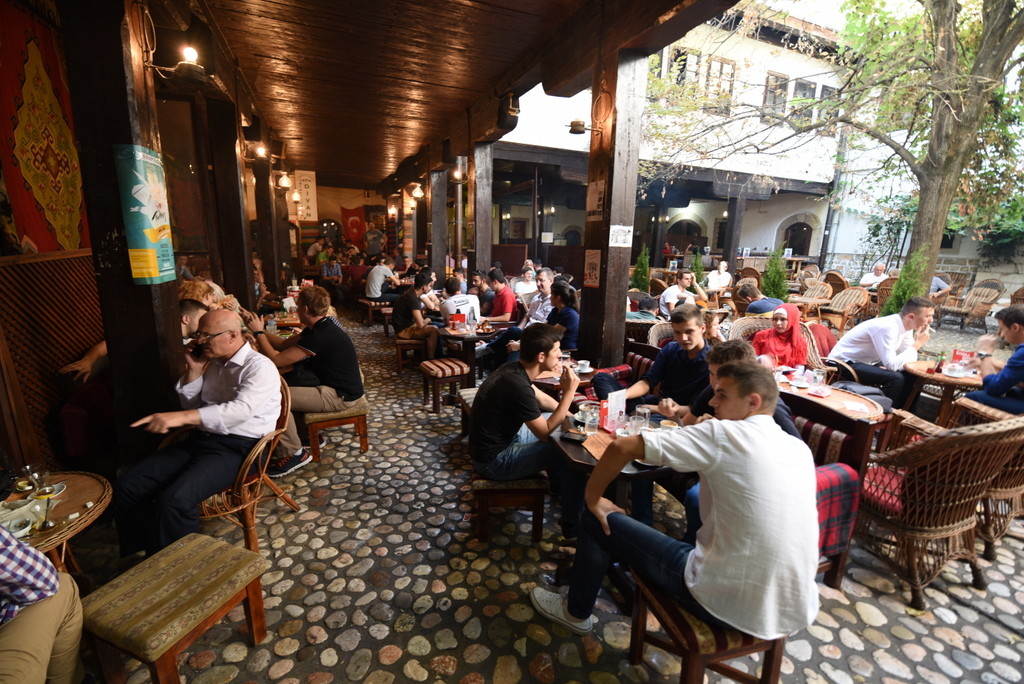
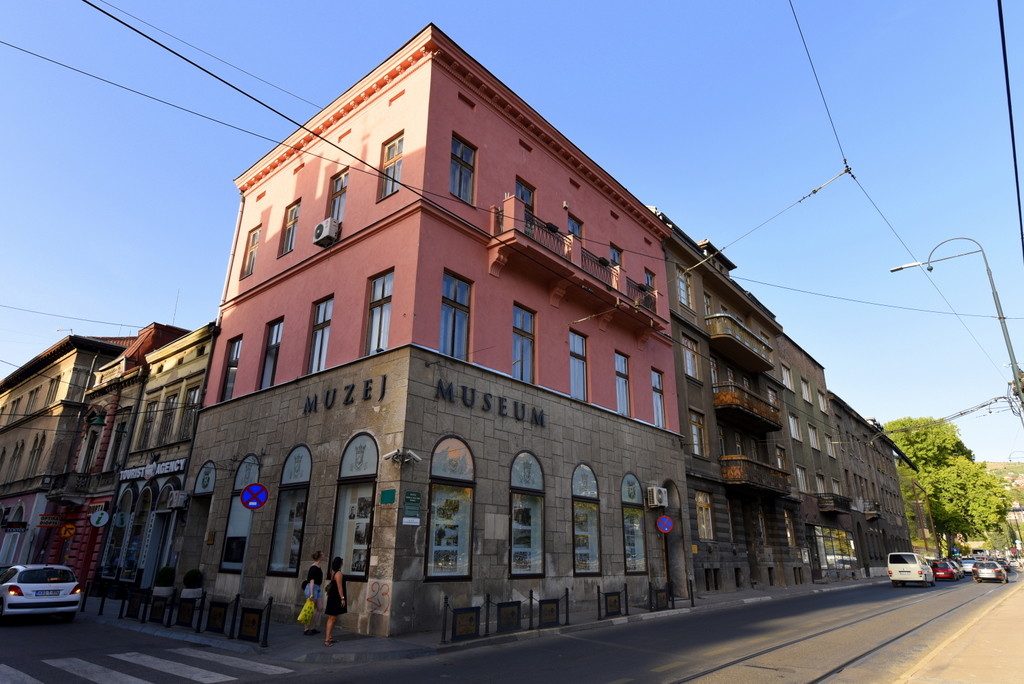

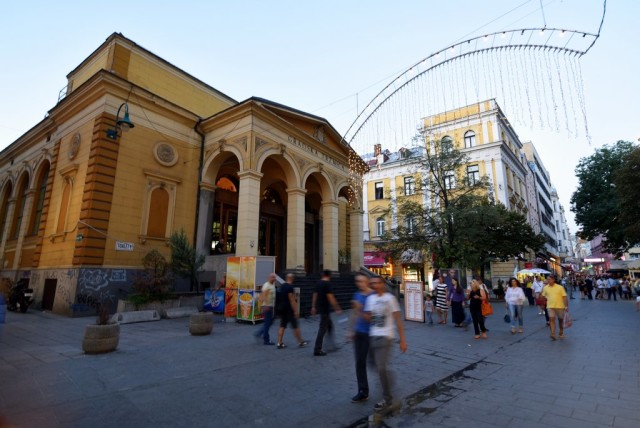
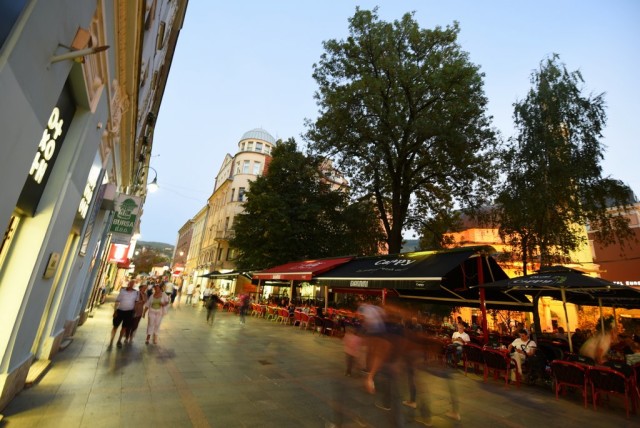
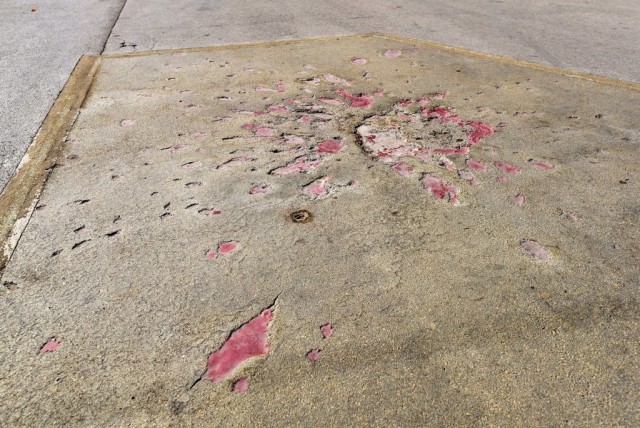
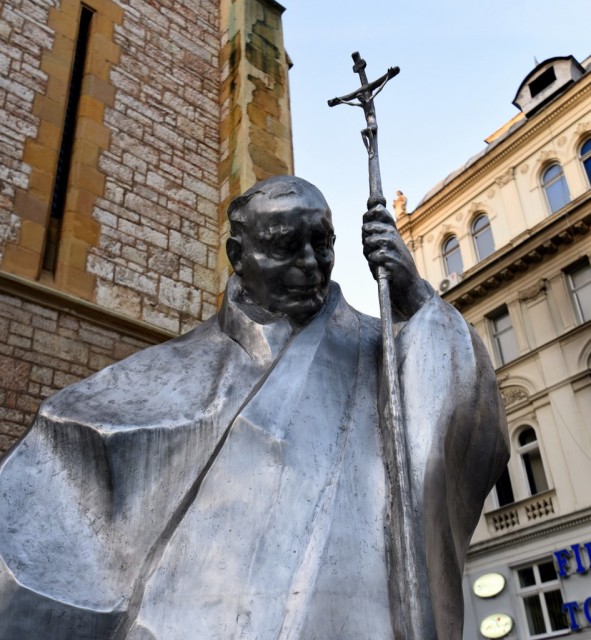
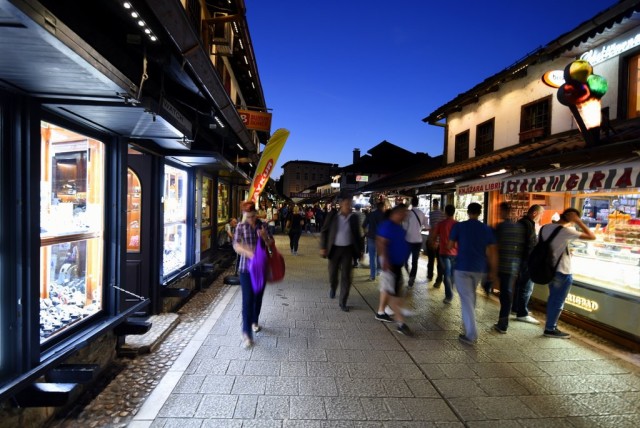
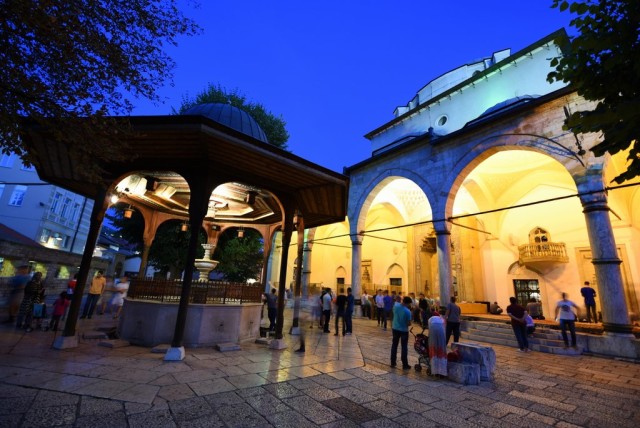
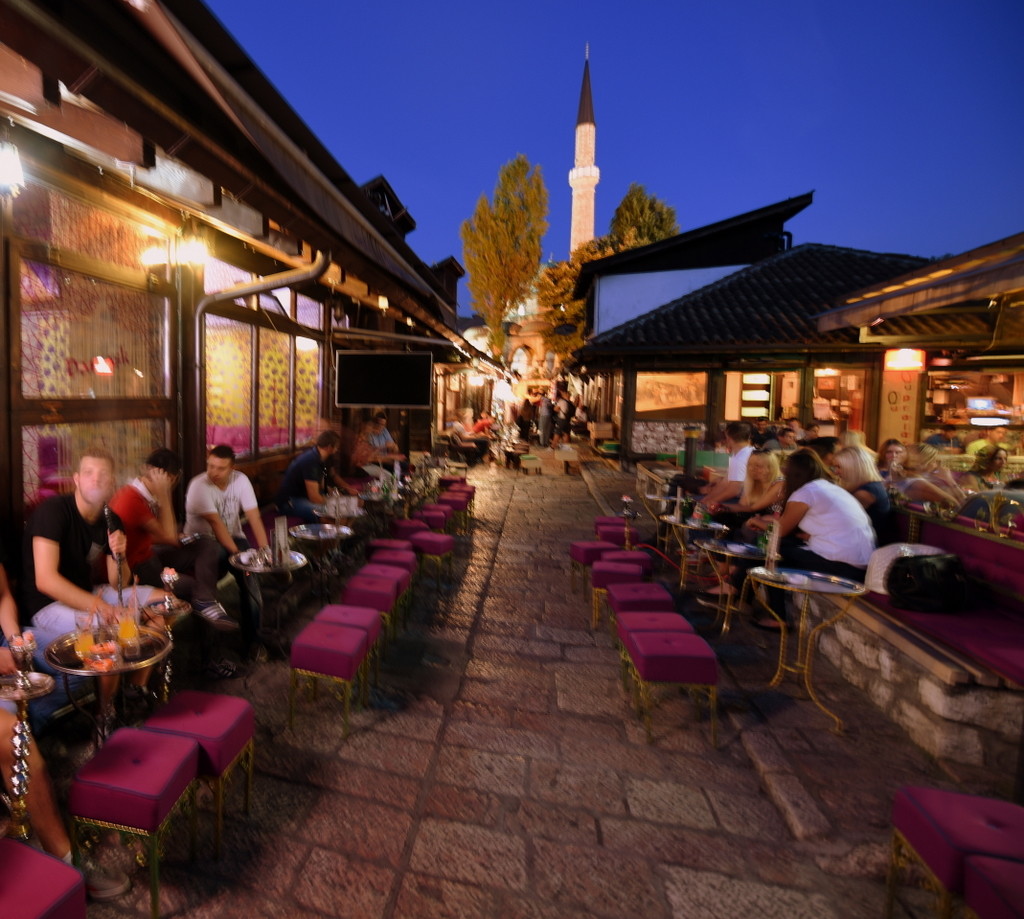
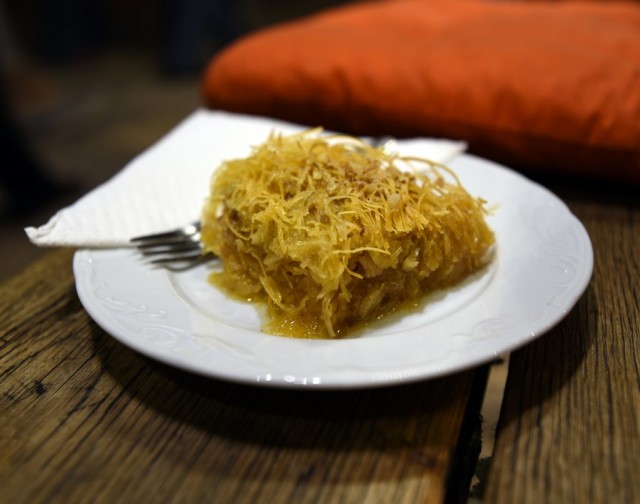
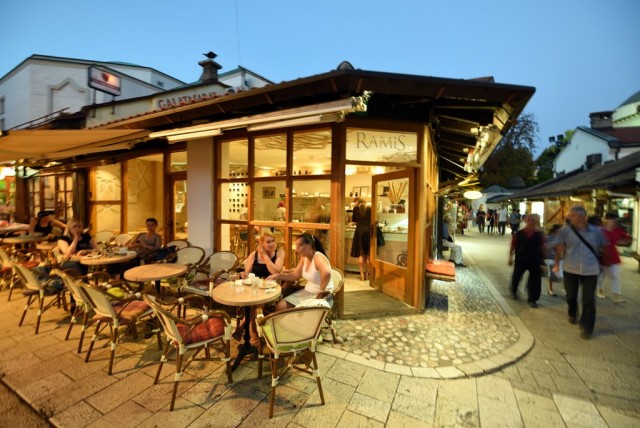 Right in front of me, two families bump into each other and spend several minutes catching up. Their awkward pre-teen, with his akimbo haircut and high-waisted mom jeans, yawns and fidgets. At the next table, tourists from Saudi Arabia — probably feeling more at home here than anywhere else in Europe — laugh the unbridled, relaxed laughter that only a vacation can bring. And all around, people are simply enjoying one of Europe’s most underrated cities. They’re in on the secret. And I’m so glad to be, too.
Right in front of me, two families bump into each other and spend several minutes catching up. Their awkward pre-teen, with his akimbo haircut and high-waisted mom jeans, yawns and fidgets. At the next table, tourists from Saudi Arabia — probably feeling more at home here than anywhere else in Europe — laugh the unbridled, relaxed laughter that only a vacation can bring. And all around, people are simply enjoying one of Europe’s most underrated cities. They’re in on the secret. And I’m so glad to be, too.

